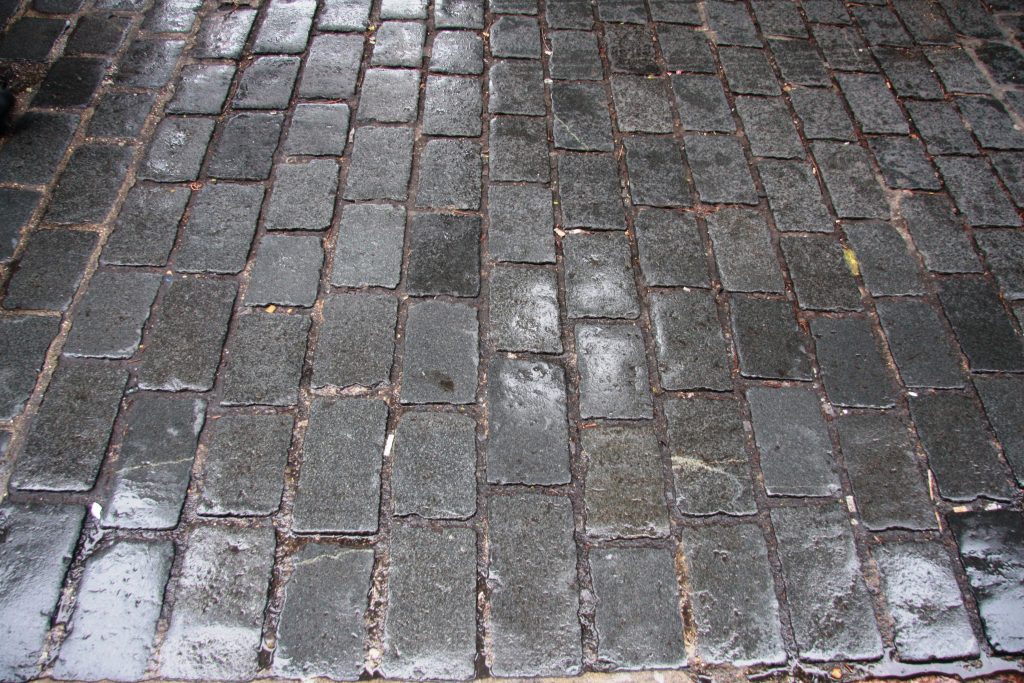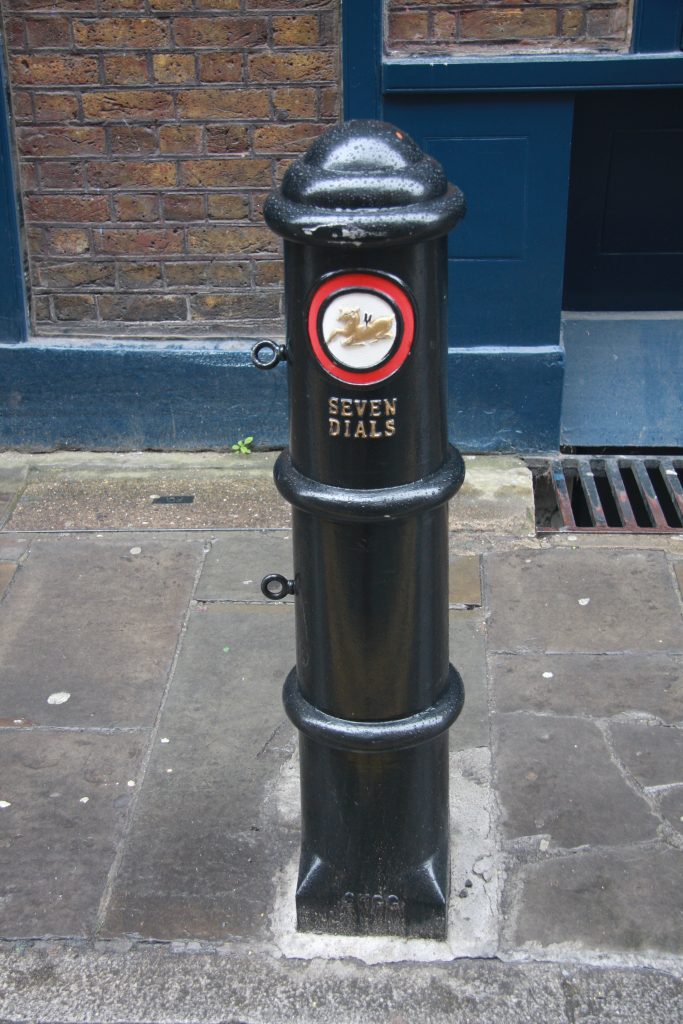The Radiating Streets
The seven radiating streets are Monmouth Street, Earlham Street, and Mercer Street (which each cross over the Dials, forming six streets) and Short’s Gardens. A consistent approach is essential and should follow the palette already in place in Monmouth Street and replicated across the borough border in Westminster. There are currently three other carriageway surface materials in the radiating and related streets: old rounded setts, concrete pavers and asphalt. Since Monmouth Street requires re-surfacing the palette might be tumbled setts, though this would leave Earlham West as the odd one out.
The Boundary Streets
Tower Street, West Street and Neal Street form a boundary of the core area. Tower Street and West Street should have ‘York stone’ footways. As Tower Street links two radiating streets, it should match their five-colour sett mix. West Street carriageway could remain in asphalt.
Neal Street, which crosses the borough boundary, is part of the North / South walking route from Shaftesbury Avenue to the Strand. At present it is a mixture of concrete setts in Camden and dark grey setts in Westminster. This should be unified by the adoption of darker setts throughout, with ‘York stone’ footways and a kerb to match the rest of the area. This would give continuity to the route already extending northwards from the Market Building in Covent Garden.


The wooden bollards in Neal Street (temporarily painted black with gold bands) are rotting and should be replaced, where they are necessary, with Seven Dials bollards. The relationship of roadway and footway should be restored to bring back the character of a traditional urban street with kerbs, and also follow the policy agreed some years ago for tree clusters rather than boulevards.
Short’s Gardens, from Neal Street through to Endell Street, is an extension of a radiating street, but it is reasonable to contain the five-colour setts to the first section radiating from the Sundial Pillar to Neal Street. The eastern section, linking the dark setts proposed for Neal Street and the tarmac of Endell Street, should match with more of the dark setts.
Courts and Alleys
Tower Court (north of Tower Street), Ching Court and Neal’s Yard have ‘York stone’ flags, the former with a particularly attractive riven finish funded by the Seven Dials Trust in 1986.
Nottingham Court is the exception. To unify the look and feel of these courts, it would be desirable to pave Nottingham Court and the southern section of Tower Court (between Tower Street and West Street) with a central 450mm drainage channel and have ‘York stone’ flagged margins falling to it. Where a sealed surface has to remain for waterproofing purposes to shallow and difficult-to-seal vaults below, a warm coloured dressing on the asphalt is a suitable alternative finish to ‘York stone’.

